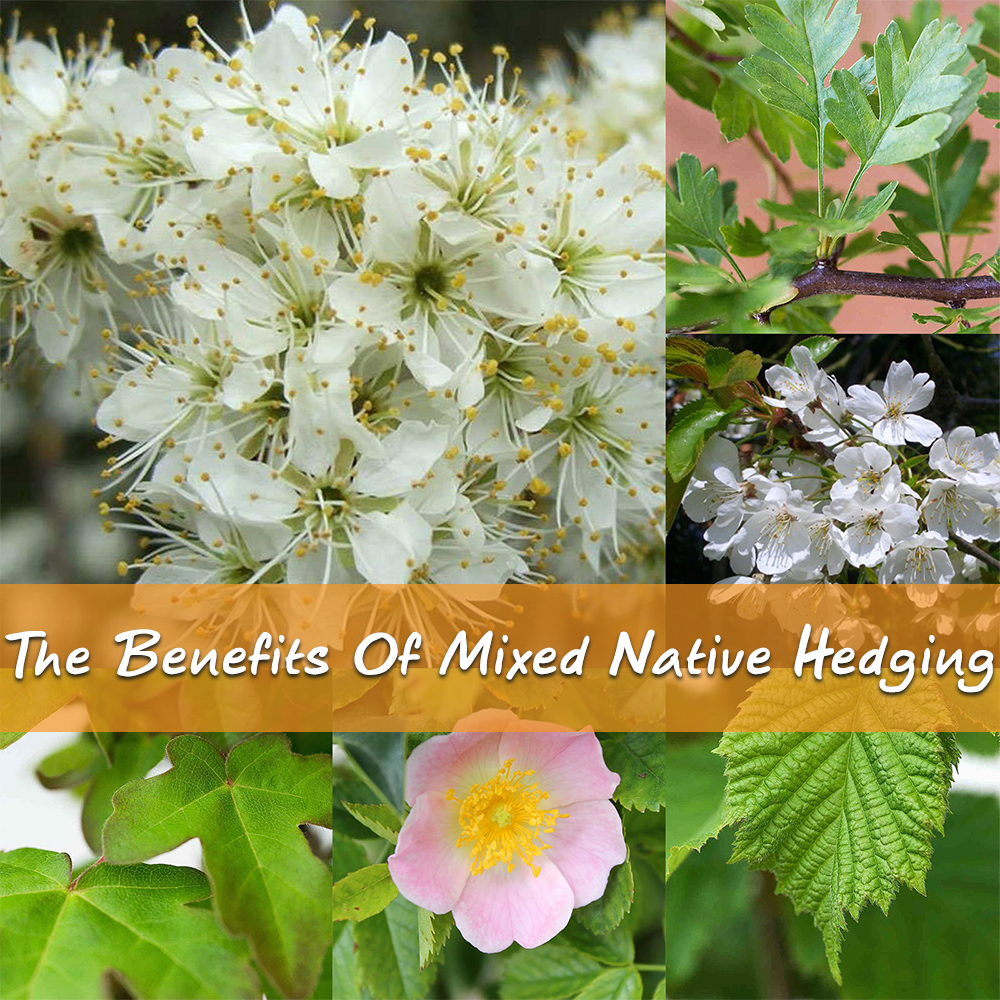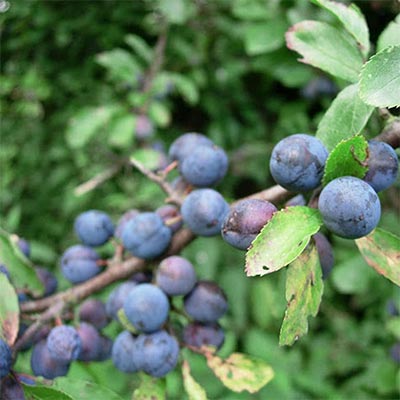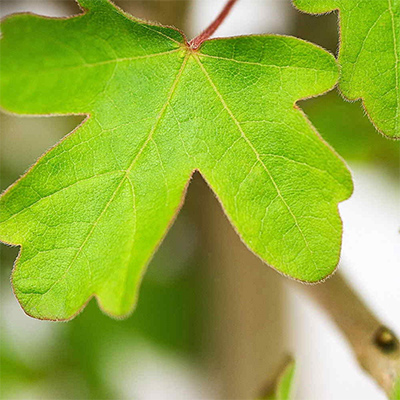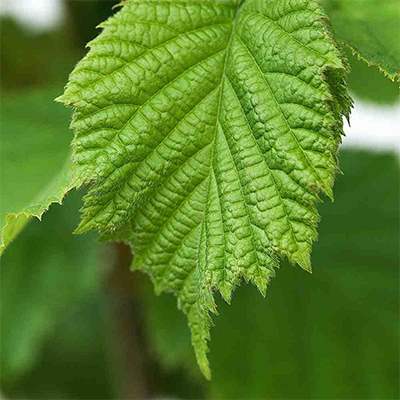Mixed native hedgerows hold so much value, not only within your own garden but also in the surrounding local area..
1.Wildlife Interest
As native hedges are species-rich, they provide a huge variety of resources for wildlife so you will be treated to a diversity of animals, insects and birds visiting your hedgerow.
Due to the assortment of species within a mixed native hedge, you will experience berries, seeds, flowers and colourful foliage throughout every season, offering continuous, vibrant year-round interest.
Insects rely on native hedging plants in order to survive. Mixed native hedges provide an entire ecosystem in which plants, animals, insects and microorganisms all co-exist together to form a balanced, thriving biodiversity. See our insect hedging chart below:
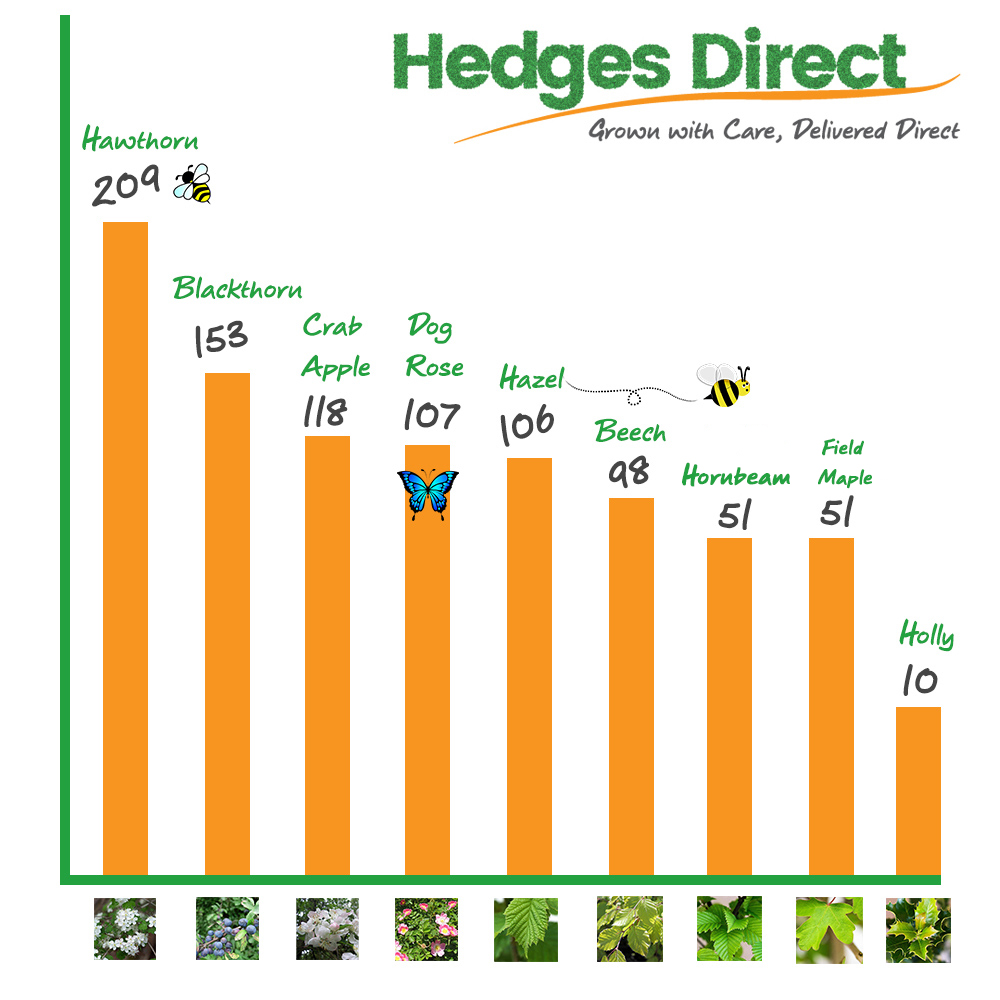
2. Environmental Benefits
Within the last few decades, there has been a dramatic decrease in the natural, established hedgerows found throughout our countryside, and similarly a decrease in our native wildlife species. By choosing to plant a native hedgerow in your garden, you will be helping towards the fight for nature and restoring the natural balance.
‘Native’ is used in horticultural terms to describe plants or shrubs that are naturalised to a specific area. This means hedging plants native to a particular region have either been developed, occurred naturally or existed there for a long period of time, and because of this the plants have evolved to the individual conditions within that area, whether it be harsh weather or unusual soil types. So, by planting native hedging species, you are guaranteed to have a thriving, successful hedge.
Mixed native hedging has a positive impact on the surrounding environment and can prevent soil erosion, reduce pollutants and store carbon to lessen the effects of climate change.
3. Low Maintenance
Whilst with most other hedges you may feel a constant responsibility to keep it looking neat and formal, you can relax with a native hedge as it looks best when left to grow naturally, bursting with various colours and textures, creating an informal feel.
If you do want to give your mixed native hedge a trim however, it will take well to pruning, and carrying this out once a year or every other year will leave you with an attractive country style hedge.
4. Attractive, Privacy and Noise Deterrent
The combination of different foliage, flowers and fruit will create an impressive feature hedge within your garden and provide a spectacular, decorative backdrop for your other plants.
A mixed native hedgerow will make a better property boundary than a fence or a wall as it forms a great natural windbreak and reduces noise. As hedges are semi-permeable, they slow the wind down rather than the wind hitting the fence or wall at full force, which can result in strong, potentially damaging currents of wind filtering down each side of the barrier. A hedge reduces the force, therefore protecting your other plants and providing shelter and habitats for wildlife.
Our Mixed Native Hedging Packs
The species included in our Mixed Native Packs have been selected to provide a long period of interest for humans (in flower, berries, leaf colour, leaf shape) as well as varying wildlife foods and shelter. We also have mixed packs which include some evergreen content, which gardeners looking for some privacy as well as wildlife value may prefer, and we have a pack suitable for coastal positions too.
About Bare Root Mixed Native Packs
The hedging species that make up these mixed native hedging packs are ideal for paddocks, fields and gardens, with no plants that are poisonous to livestock and a range of species that provide year round interest and a diverse habitat for wildlife.
Bare root packs are available from November to mid/late May (Go to bare root packs), using cold stored plants towards the very end of the season (see our blog on cold storage).
Our recommended mix for bare root native hedging is 50% Hawthorn or Blackthorn (choose Blackthorn for heavy soils or coastal/windy positions and Hawthorn for all others) with 10% each of Wild Cherry, Field Maple, Dog Rose, Hazel and either Hawthorn or Blackthorn (the opposite to the main component). These species have been selected to provide a long period of interest for humans (in flower, berries, leaf colour, leaf shape) as well as varying wildlife foods and shelter.
Mixed Native Hedging – Blackthorn Based
Species in this pack:
Mixed Native Hedging – Hawthorn Based
Species in this pack:
